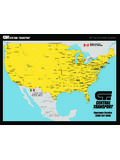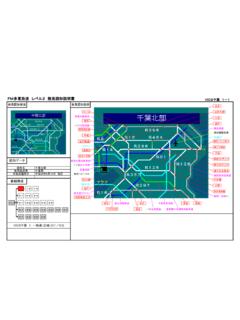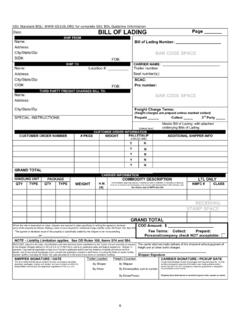Transcription of BILL OF LADING APPLICATION GUIDELINE - Ce …
1 vics VOLUNTARY guidelines FOR THE bill OF LADING January, 2001 (Revised - See next page for summary of changes) Summary of Jan. 2001 Revisions Changes to Section I. Introduction New simplified Truckload and Less Than Truckload (LTL) rates and classification legal statement options for the vics BOL on page 3. Changed print point size recommendation to a minimum of 5 to allow for various printer hardware/software font size limitations. Changes to Section II. The Standard bill of LADING Form: Updated the reference to Section IV. Rules of Use to include references to Appendix A-C. Removed duplicate statement on the Truckload and LTL rates and classification legal statement that is presented on page 3 of Section I. Added verbiage at the top of each vics BOL example pointing to the vics web site for vics BOL GUIDELINE information. Changes to Section IV. Rules of Use for the Standard bill of LADING : Added note on placement of cube data within the Customer Order Section (Point 1).
2 Added instructions on pagination (point 4). Updated Shipping Manifest description in point 5 of this section. Added reference new Appendix E: Shipping Manifest in point 4 of this section. Changes to Section V. Use Of The Supplement To The bill of LADING Added statement allowing modification of the format in the second paragraph. Changes to Section IX. Data Field Descriptions Changed item 6) Bar Code Space from no designation to Optional. Changes to Section X. Glossary of Terms Updated Shipping Manifest definition. Updated Appendix A and B Included examples of form modification and the format for LTL commodity descriptions, NMFC# and class on palletized shipments. Added New Appendix E: Shipping Manifest Added New Appendix F: vics BOL Mapping To The Carrier EDI 204, 211, 214 and 210 TABLE OF CONTENTS I. Introduction (continued) SectionPage I. Introduction 2 II.
3 The bill of LADING Form 5 III. The Standard bill of LADING Number 10 IV. Rules of Use for the Standard bill of LADING 12 V. Use of the Supplement to the bill of LADING 14 VI. Use as a Master bill of LADING 15 VII. Hazardous Material Regulations 17 VIII. Mandatory vs. Conditional Data Fields 18 IX. Data Field Descriptions 19 X. Glossary of Terms 22 Appendix A LTL Shipments using Bar Codes, multiple and Commodities (General Examples) 26 Appendix B Use of the Supplement to the bill of LADING 30 Appendix C Uses Of Master bill of LADING 36 Appendix D Change Request Form 46 Appendix E Shipping Manifest 47 Appendix F vics BOL Mapping To The Carrier EDI 204, 211, 214 and 210 53 I. Introduction 3 Objective The objective of standardizing the bill of LADING is to ensure that the shipper, the carrier, and the customer (the consignee) are all getting the information they need for the processing of the goods through the supply chain.
4 Included with the standard bill of LADING form is a standard bill of LADING number. The bill of LADING number has become a critical data element with the advent of the EDI 856 Ship Notice Manifest. The standard bill of LADING form and number will ensure that all key data elements are present and documented in a uniform manner. This will support the needs of all parties in the supply chain as well as support accurate EDI 214 Carrier Shipment Status transmissions. Overview Today neither the form nor the usage of the bill of LADING is standardized. The wide differences in the Bills of LADING in use today decreases the accuracy and productivity of recording shipment data on the forms. It also makes extracting the data for billing and freight settlement purposes very difficult, particularly for carriers and consignees who may process thousands of Bills of LADING every day. As the documents pass through hands and through companies, the data items required at each stop in the process must be located and identified wherever they may appear.
5 Traditional use of the bill of LADING was to establish a contract for carriage and as a receipt of goods. Over the last several years the bill of LADING has become a primary source of information within the supply chain. The bill of LADING has now taken on much greater importance as it is used for the scheduling and recording of shipments as well as input to carrier EDI transactions. Many shippers have modified the form, in no consistent manner, to fit the requirements of the carrier and the consignee for scheduling and unloading of the shipment. The standard bill of LADING document and guidelines address these problems so processing time can be reduced while gaining bill of LADING accuracy. As shippers and carriers become familiar with the standardized bill of LADING , individuals will easily and accurately document and extract information from this form. Benefits of the Standard Form Use of this standard bill of LADING will result in: An established uniform format for accurate shipment documentation across the supply chain.
6 Ease of tracking shipment information with the use of the standard bill of LADING number. A means of bar coding the critical data within the bill of LADING form for ease of capturing the data. Reduced driver and office administrator time used to process the information from the Bills of LADING . A potential cost reduction through the elimination of redundant forms. I. Introduction 4 A reduction in the number of undocumented Purchase Orders received. A reduction in the number of incorrect invoices due to unclear freight terms. A reduction in denied freight claims due to lack of indication of who is responsible for loading and counting the freight. Considerations Rules of Use It is crucial that all users of the standard bill of LADING read and understand the rules of use as described in Section IV of this document. Each rule highlights common misuse of the bill of LADING today, and how those may be avoided with the standard bill of LADING .
7 The format of the bill of LADING provides preprinted headings and areas for recording data elements which are typically associated with every shipment or which have particular significance. These sections shall be filled in with the required information and the format must not be changed. Any less common data elements shall be recorded in the Special Instructions section. Legal Statement The section just above the Shipper Signature is provided for the legal statement that clarifies which rules and regulations apply to the shipment. Due to the differences between truckload and LTL regulations, one of two statements may be printed in this space: Truckload or Non-NMFC LTL Carriers: RECEIVED, subject to individually determined rates or contracts that have been agreed upon in writing between the carrier and shipper. NMFC LTL Carriers: (Members of the NMFTA) RECEIVED, subject to individually determined rates or contracts that have been agreed upon in writing between the carrier and shipper, if applicable, otherwise to the rates, classifications and rules that have been established by the carrier and are available to the shipper, on request; and all the terms and conditions of the NMFC Uniform Straight bill of LADING .
8 The Truckload or Non-NMFC LTL legal statement shall be printed using a minimum point size of 5. I. Introduction 5 Supplement Page This standard bill of LADING has been developed to accommodate as many shipping situations and needs as possible. The Supplement page has been developed only for those shippers that need additional space in the body of the bill of LADING to list the customer order numbers and the commodity descriptions being shipped. The Supplement shall not be used unless necessary for the additional lines and is not required to be used. It is preferred that only one page includes all the bill of LADING information. Important Note: When the Supplement page is used, only the Grand Total cartons and weight are to be listed on the first page of the bill of LADING . The shipper will state See attached Supplement Page in the body of the first page of the bill of LADING , then list the detail customer order numbers and commodity types on the Supplement page only.
9 Packing Lists The bill of LADING is not designed to be a packing list and should not be used as one. Please check with trading partners whether any packing list needs to be shipped along with the goods or if it needs to be attached to the bill of LADING . EDI Transaction Sets This bill of LADING does not preclude trading partners from transferring the shipment information via EDI transaction sets to further expedite and standardize the data. Although paper copies of the bill of LADING may be required as a delivery receipt at the consignee facility, this document fully supports related carrier EDI transaction sets. The use of EDI in place of or in addition to the bill of LADING is strongly encouraged. II. The Standard bill of LADING Form 6 Following is the standard bill of LADING form in two versions: 1. Traditional portrait layout 2. Landscape version, meant for use when the bill of LADING data is represented by a 2-dimensional bar code affixed to the bill of LADING The implementation goal date for use of the standard bill of LADING form and the standard bill of LADING number (see section III) was January 2001.
10 Please see Section IV Rules of Use for the standard bill of LADING for a detailed explanation of how the form is to be used. In addition, Appendix A-C shows examples of completed vics Bills of LADING for truckload, LTL and consolidation shipments. II. The Standard bill of LADING Form 7 vics Standard BOL: WWW. For Complete vics BOL GUIDELINE Information Date: bill OF LADING Page _____ SHIP FROM Name: bill of LADING Number: _____ Address: City/State/Zip: BAR CODE SPACE SID#: FOB: SHIP TO CARRIER NAME: _____ Name: Location #: _____ Trailer number: Address: Seal number(s): City/State/Zip: SCAC: CID#: FOB: Pro number: THIRD PARTY FREIGHT CHARGES bill TO: Name: BAR CODE SPACE Address: City/State/Zip: Freight Charge Terms.











